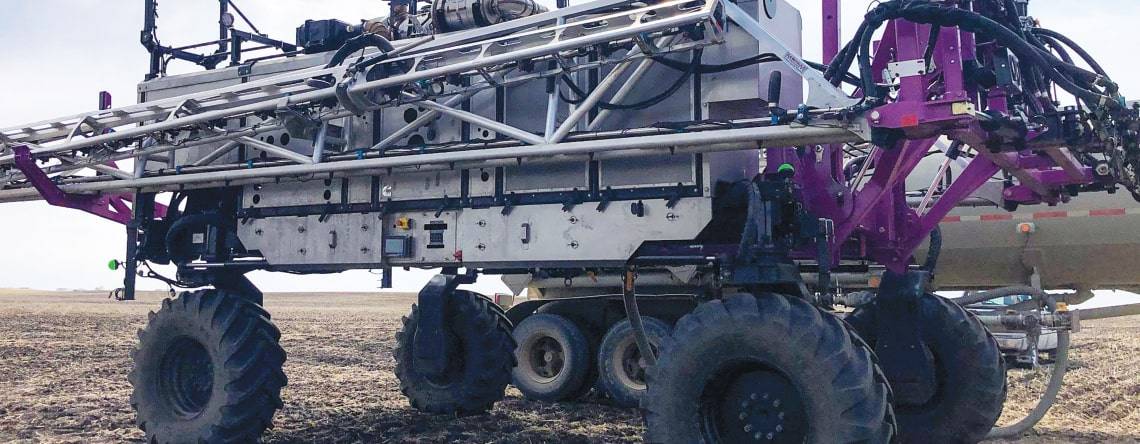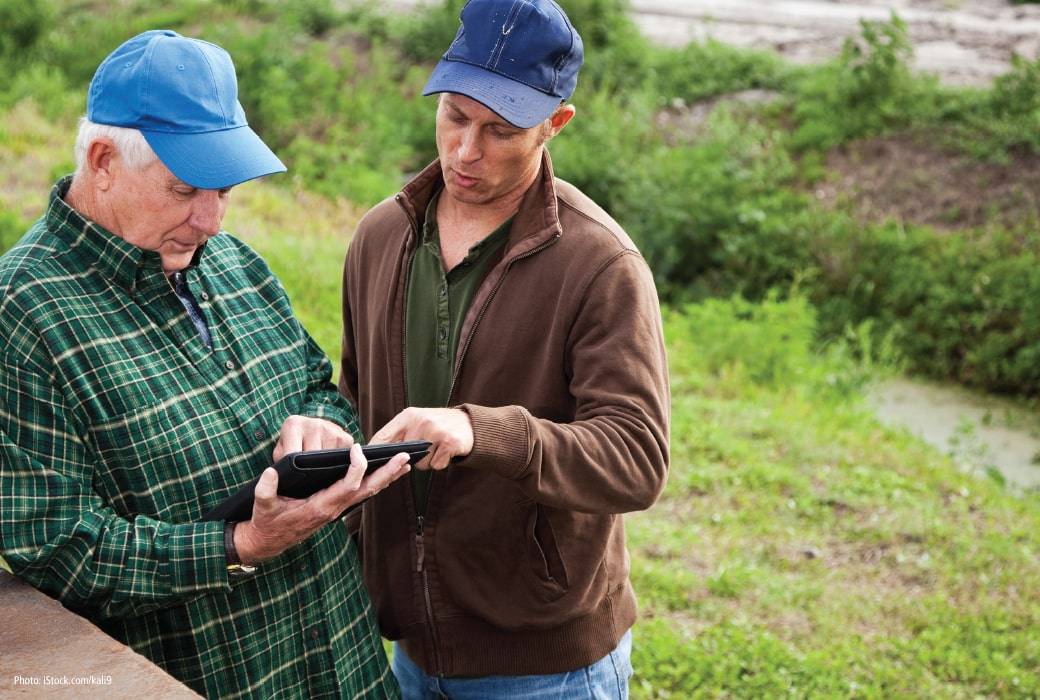
Emerging ag technology has the potential to disrupt.
Autonomous equipment and precision application systems have the potential to disrupt the traditional inputs application, which some say will ultimately benefit retailers.
David Parker, executive vice president of FLM Harvest and the opening presenter at the 2021 Virtual CAAR Conference, says farmers trust their retailer’s expertise and would likely consult them on new ag products and trends.

“Ag retailers are often very well-known and very trusted by the producer. They could guide their customer’s decision by offering good general knowledge about ag technology,” says Parker. “It’s a role most retailers don’t give themselves enough credit for.”
Ben Sees, product manager at Raven Industries Inc., says retailers often introduce a new technology’s capabilities to a farmer and teach them how to utilize the equipment on their field.
“Farmers look to ag retailers for services that make their lives easier,” says Sees. “Ag technology provides the value, accuracy and timely services that farmers need, and retailers can give them that.”
The opportunity in this is by upgrading their knowledge retailers can position themselves as experts in ag tech in addition to ag products.
Labour and Time Savings
A farmer’s most precious commodity is time, and advances in ag tech can be an answer to one of the industry’s biggest challenges – labour shortages.
“There is a growing concern over labour shortages in the agricultural sector, that includes skilled labourers,” says Sees. “Ag tech is trying to alleviate overall labour shortages by creating autonomous systems that will operate and perform tasks very consistently over and over again.”
In late 2019, Raven acquired SmartAg, a technology company that developed aftermarket retrofit kits to automate farm equipment and a platform to connect, manage and safely operate autonomous machines. In 2020 they also finalized their acquisition of DOT, a U-shaped modular autonomous platform that has the potential to transform much of the field work performed by manned equipment into an autonomous operation.
Farmers look to ag retailers for services that make their lives easier. Ag technology provides the value, accuracy and timely services that farmers need, and retailers can give them that.
“Raven has been producing ag technology for over 30 years,” says Sees. “The SmartAg and DOT technologies represent a combination of our technology and the technology that we have acquired through those two companies. We put significant work into the tech we acquired to make them commercially viable.”
Sees says the acquisitions of SmartAg and DOT (renamed Raven Dot) positions Raven as a global leader in autonomous technology, furthering their quest to introduce efficient ag tech to the market. The company also established a Canadian headquarters for Raven Applied Technology in November 2020 near Regina, SK. The new 21,000 sq. ft building is dedicated to assembling, manufacturing and testing Raven Dot platforms.
“We’ve been working with our Dot-ready implement partners to branch out and increase the value of Dot to other locations and markets,” says Sees. “We want Raven Dot to have additional functionalities to increase its value to a farmer so they can use this system more times during the year.”
One of the first partners to develop an implementation for the Dot platform was Pattison Liquid Systems, who introduced the CONNECT sprayer in 2018.
Since its launch, Pattison has updated it to operate with Raven’s newest height controller software, AutoBoom XRT and included Raven’s Hawkeye 2 Nozzle Control software that offers two-and-a-half times the accuracy of the initial version.
“We envision Dot as a machine that farmers can work with,” says Tim Pattison, CONNECT project lead. “The farmer can be totally autonomous or be operating a machine, like a high clearance sprayer, and be followed by a swarm of Dot implements.”
Throughout 2020, Sees says Raven was testing and perfecting the Dot technology and will continue to do so until its commercial launch in late 2021.
Application Savings
Brent Nicol, Canada Lead for xarvio – Digital Farming Solutions, says one of the precision application’s greatest benefits will be to help farmers reduce the amount of product they need, and apply it in a more efficient and sustainable manner.
Xarvio has been developing its Smart Sprayer precision sprayer technology since 2017, and in 2020 announced a joint venture with the technology company Bosch to further its development.
The Smart Sprayer uses image-recognition technology for targeted herbicide application. As the sprayer moves through the field, the attached high-resolution cameras identify weeds amongst the stubble or crop and signal the Smart Sprayer to spray only the weed for targeted application. Nicol says that while precision sprayer technologies like the Smart Sprayer offer measurable advantages, it may take some time for farmers and retailers to become accustomed to the idea.
“These tools and technologies are already in the works,” says Nicol. “When the time comes for more demand in sustainability, the hard work has already been done on the technology. Hopefully, it will be an easy transfer to both the growers and the retailers to kind of hit the ground running with its adoption.”
Nicol says the first commercial xarvio Smart Sprayers are in scope for 2023 or 2024. He expects Smart Sprayers to end up on large and corporate farms first and eventually onto smaller farms as it becomes widely available.
Updating the Retailer-Customer Relationship
The autonomous and precision ag technology markets will continue to grow, says Parker, while the number of farms will continue to shrink.
“Customer retention is a huge deal in North American agriculture, especially in crops,” says Parker. “Farm consolidation has been going on forever, but it’s now moving at an accelerated pace.
“Retailers in the same market have all the same top customers, so retailers need to think about the customer’s needs like a strategic advantage,” says Parker. “We don’t have the luxury to not think like that today because of the issue of consolidation.”
Parker says retailers should consider partnering with new technology companies. Collaborating with other companies could increase a retailer’s knowledge of ag technologies and provide a unique service to its customers. He believes keeping an eye on new trends in both ag technology and inputs are tactics that can help keep retailers competitive.
“Be proactive,” says Parker. “Speak to companies bringing the best technology and see what partnering opportunities they have. You do not have to own it all yourself to offer useful services to a customer.”
Sees says ag tech has the potential to give farmers additional flexibility by assigning repetitive farm labour to machines and improving efficiency. For retailers, the ag technology market could expand the kinds of services they offer their customers.

“I don’t know any farmer or ag retailer that has enough labour to accomplish everything they want to do in a day,” says Sees. “Ag tech gives them more flexibility to do the things that they normally wouldn’t have time for.”
A move towards more widespread use of advanced precision ag technology could also be good news for the environment. Nicol says consumers are becoming more knowledgeable about where their food comes from, including how it is grown. Nicol anticipates that it is only a matter of time before governments will implement regulations on farming practices.
“As the general population wants to know more about how their food is grown and maintained, it increases the potential for some types of government regulation,” says Nicol. “They could start mandating targeted applications, and we’re starting to hear that.”
This could mean a reduction in the overall use and purchase of inputs as governments, consumers and producers demand more sustainable farming practices.
“There is no doubt that we’re going to continue to see regulatory pressure towards the application of inputs,” says Parker. “Someday it won’t be an option.”

